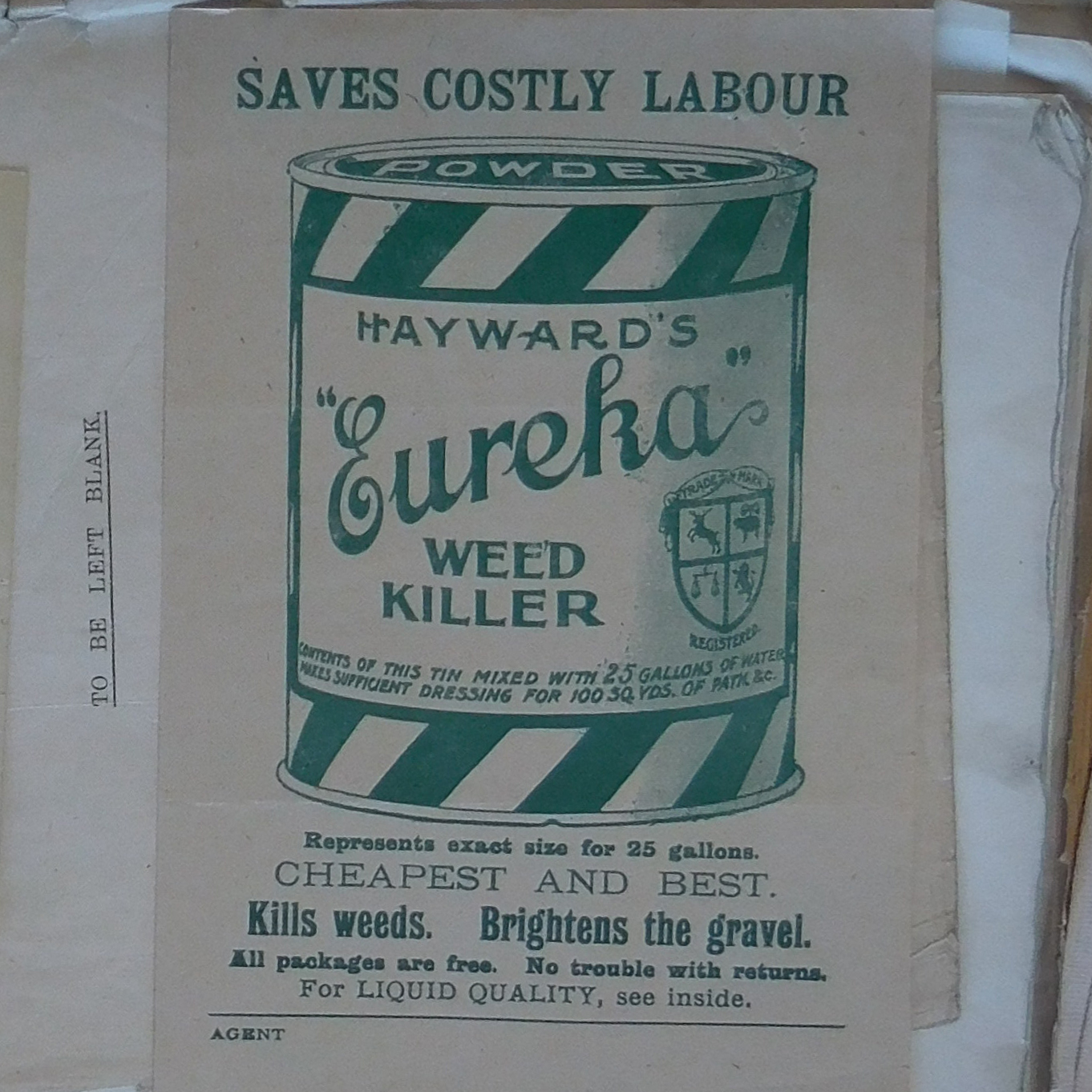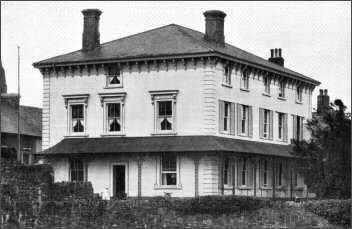

Age: 47
Sex: female
Date: 16 Jun 1919
Place: Rumsey House, Kidwelly, Carmarthenshire
Mabel Greenwood died from arsenic poisoning.
Her husband was accused of her murder and tried but acquitted.
She died on 16 June 1919 but was later exhumed in April 1920 when it was determined that she had died from arsenical poisoning.
Salient dates in the case include:
It was said that weed killer had been added to the wine. The weed killer brought up in evidence was called Eureka and there was enough in one tin to make 100 gallons of liquid and contained 7lbs of arsenide of soda. It was noted that there were further instructions stating that after application any dead worms were to be swept up because they could be eaten by chickens etc. and kill them.
The pathologist who examined Mabel Greenwood's body said that he found arsenic present in all her organs saying that there was a total of .278 of a grain or just a little over a quarter of a grain. He also said that he found no traces of morphia. He said that he had tested the Eureka weed killer and found that it contained 55.6% of arsenic and that 4 grains of weed killer would equate to 2.25 grains of arsenic. He then produced a bottle containing port wine and to which 4 grains of the weed killer were added. He said that that amount of weed killer could be dissolved in 10 drops of water. He noted that there was a very slight difference in the colour of the wine but that it was only perceptible by actual comparison. He then tasted the port wine to which the weed killer had been added and found that there was no difference in the taste. He said that he had also added 4 grains of weed killer to a cup of tea and said that again there was only a slight darkening in colour perceptible by comparison only and that the taste was practically unaltered.

The pathologist went on to say that there would be 12 ordinary port wine glasses in a bottle and to get two grains into each glass 40 grains of weed killer would be required which would be about half a teaspoon.
Mabel Greenwood had married her husband 23 years earlier and had four children. They all lived in Rumsey House along with Mabel Greenwood's sister who shared the expenses. There were also three servants and a gardener. Mabel Greenwood was 47 years old and had been delicate for some years. Her doctor who had been attending her for 15 years said that in the last three months of her life she had seen him more frequently than in the past and that for the last 6-7 weeks had been treating her for internal troubles and for a weak heart. He said that in those weeks her health was failing her but she did not realise it.
In the last few days her sister was away from Rumsey House and Mabel Greenwood discharged all the household duties and in the last three days of her life did not consult her doctor at all.
On Saturday 14 June 1919 she attended a tennis club at Ferry Side with the Vicar and came back to the house with him. On the Saturday night Mabel Greenwood seemed to be in good spirits but on Sunday morning she was not quite so well although she invited a woman to come to supper that evening and so it was presumed that as far as she was concerned she expected to be in sufficiently good health to entertain her guest.
On the Sunday, luncheon was served at about 1.30pm and was attended by Mabel Greenwood, her husband, sister and another relative. It consisted of roast beef, gooseberry tart and custard. The parlour maid said that at one point when she went to the china cupboard she saw the husband there and said that he was there for about 15 minutes. She said that she waited for him to come out and then went into the dining room and then took the wine and whisky out of a cupboard there and put it on the table. The parlour maid said that she put a bottle of port wine in front of Mabel Greenwood and noticed in particular that it was not a full bottle. She said that Mabel Greenwood drank some of the wine, her husband drank whisky and soda, and the children drank water. The parlour maid said that she then cleared away the luncheon and laid the table for supper. She said that she put out the whisky as before but found that the bottle of port wine had gone. The parlour maid said that later on the Monday she looked for the bottle of port wine but could not find it anywhere.
It was suggested by the prosecution that the husband had put the poison in the bottle of port wine whilst he was in the china cupboard and had later disposed of the bottle.
In the afternoon Mabel Greenwood went to lie down while her husband went to attend to his motorcar and then in the afternoon Mabel Greenwood complained of suffering from diarrhoea which was one of the symptoms of the onset of arsenic poisoning. Her husband told her that she should not have eaten the gooseberry tart.
At 5.30pm she walked into the garden and then at 6pm she came back into the house with her husband and then complained of pains in her heart. She was in great pain and her husband gave her some brandy. However, when she took the brandy she ejected it straight away. Then at 6.30pm she said she felt faint and went to bed. Then at 6.45pm the husband went across the road to get the doctor telling him that the gooseberry tart had upset her. The doctor prescribed sips of brandy and soda water. After the husband and the doctor went out into the garden where it was said the husband detained the doctor with a game of clock gold. The husband had said that he had detained the doctor because he was anxious for his wife but the prosecution said that by detaining him medicines were not sent for his wife until 7.30pm when the doctor left.
At 6.45pm a woman arrived and she went up to see Mabel Greenwood and then sent for the district nurse. The court heard that it was important to note that the woman had sent for the nurse of her own accord but that the husband had later claimed responsibility for the initiative. When the district nurse arrived she found Mabel Greenwood in a state of collapse and said she was vomiting and very cold and complained of stomach pains. At 9pm the nurse went home to put her little boy to bed and when she returned at 10pm she was so seriously alarmed at Mabel Greenwood's condition that she sent for the doctor who had not been there since 7.30pm.
The court heard that whilst the husband was at the doctor's house at 10pm he had a remarkable conversation with the doctors sister and told her that his wife was ill and might not get over it. He told her that it was a lot worse than one of her normal fainting trips and then told her that a fortune teller had told him that he was going on a honeymoon trip. It was also noted that the amount of time he spent at the doctors was debatable but that he did not go back until Mabel Greenwood's sister came to get them to prescribe Mabel Greenwood with morphia.
At midnight the other woman had gone home and the doctor had left and the sister gone to bed and only the husband and the district nurse were in Mabel Greenwood's room. Then at 3am the district nurse said that Mabel Greenwood had become much worse and sent again for the doctor. By that time Mabel Greenwood was at deaths door and died at about 3.20am.
The doctor then certified that she had died from valvular disease of the heart and she was buried in the church yard at Kidwelly.

The prosecution then went on to detail a motive, saying that whilst Mabel Greenwood and her husband had appeared happily married, there were quarrels regarding his attention to other ladies and that her husband was already seeing the woman that he later married and that he had poisoned Mabel Greenwood so that he could marry her. It was noted that the husband had offices at Frederick Street in Llanelly consisting of three rooms and in the middle of 1919 he had no clerk there and was alone there and that he was seeing the other woman there regularly. It was also noted that as far back as December 1918 he had paid £15 for a dressing bag for the other woman which he had bought in Llanelly. It was also heard that there was abundant proof that Mabel Greenwood's husband and the other woman were already on intimate terms whilst Mabel Greenwood was alive.
The court heard that on 4 July 1919, 19 days after Mabel Greenwood died, the husband bought his new wife a diamond ring costing £55.
It was also heard that on 16 June the caretaker of the office at Llanelly noticed a letter there that she knew was in the new wife's handwriting, saying that it was burnt in the grate but that she could still see the words, 'it will be nice when I am your wife' written in it. It was heard that the letter was received on the Monday morning and noted that Mabel Greenwood had died that Monday morning at 3.30am and so concluded that the letter had been written and sent before Mabel Greenwood had died.
The court also heard that the husband had become quite angry with a woman when he heard that she had written letters a while before Mabel Greenwood's death saying that Mabel Greenwood was not ill. The prosecution asked why he would commit time to write such letters if it were not for the fact that he wanted it known that Mabel Greenwood was ill.
The prosecution also relied on the fact that the husband had bought weed killer in Edinburgh seven weeks before Mabel Greenwood's death.
However, at the trial Mabel Greenwood's husband was acquitted.
see en.wikipedia.org
see National Archives - HO 144/11780/399766, MEPO 3/265B, ASSI 72/46/7
see Murderpedia
see Aberdeen Journal - Wednesday 10 November 1920
see Cornishman - Wednesday 10 November 1920
see Dundee Evening Telegraph - Thursday 17 June 1920
see Dundee Evening Telegraph - Friday 02 July 1920
see Portsmouth Evening News - Thursday 04 November 1920
see Portsmouth Evening News - Tuesday 02 November 1920
see Unsolved 1919